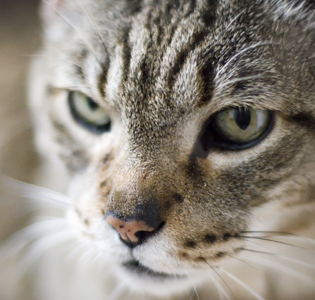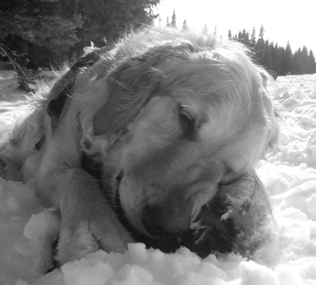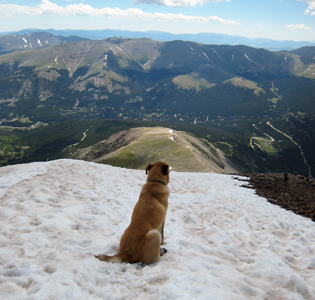Common Questions
How will i know its time to euthanize my pet?
This is a very private, personal decision and YOU know your pet best. Trust yourself. Many times your emotions could cloud your ability to “see” the health your pet is in. Discuss your pet’s health with friends and family who know your pet. Discuss your pet’s health with your veterinarian. It is very possible your pet is also “telling” you he or she is ready to pass. What is your pet’s quality of life?
Things to help determine your pet’s quality of life:
- Behaviour changes: hiding, acting “lost” in familiar places or rooms in the home (dementia), sudden aggression, no interest in play, favorite toy, companion pet, loss of appetite, etc
- Debilitated due to extreme age or illness. Examples are: can no longer walk or rise, loss of bowel control or incontinence, a tumor causing obstruction of feces or urine passing, uncontrollable vomiting, diarrhea, etc
- Pain that can no longer be managed with a variety of modalities (pain medications, supplements, acupuncture, etc)
- More “bad” days than good. Keep a calendar and have ALL family members record findings daily. It can be difficult to remember what last Saturday was like for your pet, let alone, a Saturday four weeks ago.
It is HIGHLY recommended that a thorough health evaluation be done with your regular veterinarian BEFORE deciding to euthanize. Are you aware that one out of every nine senior pets (pets over age 8 years) has a urinary tract infection without clinical signs like “accidents” in the house? Are you aware a low thyroid level can appear as “slowing down”, “tired all the time”, “shows no interest in play” and weakens the immune system? Are you aware that dogs and cats show “pain” very differently than humans? They can’t say, “Hey, my back is sore every morning.”
Diagnostics?
Consider doing these tests with your regular veterinarian.
- Chemistries: This evaluates the liver, kidneys, blood glucose (sugar), and electrolytes. You’ll want to do this test also if considering some oral pain medications to be prescribed by your veterinarian.
- SDMA is a biomarker for kidney function and can detect issues with the kidneys much sooner than changes that may be seen in Chemistries. It can help with decisions to pursue additional diagnostics such as thyroid testing and urinalysis. It can help with making decision for diet changes, medications, and changes to anesthetic protocols which may be needed for your pet.
- Complete Blood Count (CBC): This evaluates the red blood cell count and white blood cell count. This can see if your dog is anemic or if there are signs of infection.
- Urinalysis: This is VERY important. Many older dogs and cats have urinary tract infections or early kidney disease without any outward signs.
- Thyroid tests: Again, very important tests. It’s amazing to see the change in a dog that is hypothyroid (low thyroid hormone levels) or a cat that is hyperthyroid (high thyroid hormone levels) once the disease is managed/treated.
- Radiographs (xrays)/Ultrasound: The physical exam done by your veterinarian may determine that radiographs and/or ultrasound are needed. These can help diagnose heart disease, lung disease, arthritis (pain possibly?), and other disease processes.
By doing these tests and pursuing treatments such as antibiotics, pain medications, possibly surgery, you may add months, if not YEARS, to your dog’s or cat’s life. I would much rather hear, “I read your website and took my dog to my veterinarian. Now he’s doing MUCH better!” than “I wish I would have done some of, if not all of, these tests before euthanizing my dog. I wonder if…” If you have done these tests in the past, but it’s been over 6 months, consider retesting to see if there are changes. Remember, one year of a pet’s life is approximately equal to seven years of a human’s life.
To euthanize your pet is a difficult decision. It is a selfless act allowing you to end pain and suffering in your pet’s life. You should be as well informed as you choose to be before making this decision.
That said, the decision of an owner to choose to NOT be informed especially with pets that are extremely old, that have obvious illness or infirmity, or financially cannot pursue treatment if a severe illness or surgery is needed to cure, or maybe just manage, the disease is also respected. Again, you and your family know your pet and what is best for you and him at this time.
Go to the Top
Who should be with my pet when he’s euthanized? should children be present? other pets?
This again is a personal decision for you and those who know your pet. We cannot make the decision for you.
As for your children, this may be their first experience with death. Their age and maturity may determine if they can process the concept of death. Using the phrase “put to sleep” may not be appropriate for them. Please be honest with the children about the health of your pet and what will be happening in the home or the location of your choice that day. Don’t be afraid to use the words death and dying although they can be difficult to say. If your children are older, please include them in the discussions and decisions concerning the euthanasia. Parents should decide in advance, if possible, whether the children will be present for none, some, or all of the euthanasia process.
There are many resources available for families to help them determine if their children should be present and to help children understand the death of a pet. Please see the Resources & Support page.
As for your other pets, you know how the pets interact with each other. Were they long time companions? Two peas in a pod? Or does the six month old puppy pester the cat we are euthanizing? Home euthanasia is meant to be a calm, tranquil passing for the pet so please consider your pet’s needs. I do recommend, after the pet is euthanized, the pets in the home interact with him so they are aware that he is no longer alive.
Do you have to be present? Some choose to be with their pet only during the sedation phase and not during the administration of the euthanasia solution, others choose to be present during the entire procedure. You can pet, talk to, and/or hold your pet during the procedure. You may excuse yourself at any time you wish. No one should feel forced to stay. Everyone’s needs are different.
Go to the Top
When and where do we euthanize our pet?
As anyone who has had a pet can tell you, there is no “good” time to say goodbye, but it is a thoughtful and caring decision, albeit sad, that needs to be made. Consider your pet’s current quality of life. Consider your pet’s needs and abilities. Does he have a favorite room in his home? A spot by the fireplace? Is he able to walk from the car to a favorite trail, lake, or park? Was he a working dog and his favorite place is a bed by your desk or in the tack room at the barn? We’ll do our best to accommodate your wishes for the location of your choice.
Euthanasias are scheduled by appointment only. We realize not all euthanasias can be planned in advance. We strive to accommodate the pet’s and the family’s needs. Evening and weekend appointments can be scheduled. Please call and text for availability.
Go to the Top
How is euthanasia performed at home?
Each pet is unique. There are a variety of medications that are available for sedation and anesthesia for the pet. Which drugs will be used and at what dosage depend on the pet’s weight, the species, the medical history, current medications being given to the pet, and so on.
All pets will be sedated before the administration of the intravenous euthanasia solution. This allows the pet to relax, surrounded by loved ones, and it gives the family additional time to say goodbye. Again, each pet is unique, and at times, an additional anesthetic solution is given. This way your pet is completely relaxed/anesthetized so minimal restraint is needed during the administration of the intravenous euthanasia solution.
Please allow at least one hour for the appointment in your home. This allows us time for paperwork, payment, and time for each medication to take full effect. If you need more time with your pet to say goodbye during the visit, you will not be rushed.
Go to the Top
Aftercare. What are my choices?
There are a variety of options for your pet’s remains. This is also a private decision and should be made before the euthanasia if possible. Again, consider including the children in the decision if their age and maturity are appropriate.
Some people choose burial. There are pet cemeteries in Colorado. Information can be provided to you from Summit Mobile Veterinary Service or your own web search can be done. I recommend visiting the cemeteries, in advance, before they are needed.
Some people choose private home burial. This can be complicated, but not necessarily impossible. Direct all questions to your HOA, city and/or county government. All burial sites MUST be away from water sources and buried lines. The body MUST be properly covered and buried at a depth of at least four feet to prevent disturbance from other animals. This depth can be difficult to achieve in our rocky, and often, frozen soil. A burial box or casket is recommended.
The sedatives, anesthetics, and euthanasia solution given to your pet can KILL other animals if ingested.
Cremation is another option. This can be communal or private.
Communal cremation: Your pet will be cremated with other deceased pets. The cremains are mixed, and thus, ashes cannot be returned to the owner. The crematory will disperse the ashes.
Private cremation: Your pet will be privately cremated and the ashes will be placed in a container for you. If you are not spreading the ashes and would like a special urn for the ashes to be placed in, there are many websites available with a variety of urns that you can select from.
Summit Mobile Veterinary Service uses the Summit County Animal Shelter’s cremation services and will transport your pet to this facility. We have personally viewed their process and feel confident that they offer professional, ethical services.
If you’d like, you may also transport your pet to the Summit County Animal Shelter or a crematory of your choice. Many crematories will allow the family to be present during the cremation of the pet. Please contact the crematory ahead of time to schedule this service.
Please be aware, it can take up to seven days for the cremains to be ready for you to pick up at the shelter. Please call the shelter at 970-668-3230 before going to pick up the ashes to verify they are ready for you. The Summit County Animal Shelter’s address is: 58 Nancy’s Pl, Frisco, Colorado 80443. If you think it may be a few weeks or a month before you will be ready to pick up the ashes, please tell Dr Fair and/or the shelter, we will make a note on your pet’s record.
If you do not pick up the ashes of your pet within 6 months of the cremation, the shelter will disperse the ashes appropriately.
Go to the Top
How can i memorialize my special pet?
There are many ways you can memorialize your pet. If you’d like, a clay paw print impression of your pet’s paw can be made for you to keep. Also a lock of fur can be saved for you. Please request this when you make your appointment or at the time of the euthanasia if you’d like one.
Other options are:
- Take a paw print for a garden stone or have a stone or plaque inscribed for the garden.
- Plant flowers or bulbs that would bloom on the anniversary or plant a tree
- Donate food, bedding, toys, etc to a local shelter or animal rescue foundation
- Have a pendant or piece of jewelry made
- Contribute to an appropriate animal cause in your pet’s name (examples are LAPS in Summit County, Argus Institute at CSU, Morris Animal Foundation, etc)
- Or do something special in your dog or cat’s name because of the uniqueness of your pet! Your dog liked to raft? Donate to a cause for saving rivers, fresh drinking water, etc. Your dog loved to hike in the snow in the backcountry with you? Donate to a group such as CAIC or Friends of Berthoud Pass. Your cat liked beer and ice cream? (Dr. Fair’s did!) Take some ice cream to a local non-profit in your cat’s name or raise a glass with friends in his memory.
Why call and text for appointments?
We are extremely lucky to live in the beautiful Rocky Mountains! However, as we all know, living in mountain communities can make cellular phone service interesting to say the least. There are many areas where service is limited or non-existent. There are also times where voicemails are delayed or the recorded message is broken due to limited service, weather, etc. In some instances though, text messages can be retrieved and sent where calls/voicemails cannot get through.
Every attempt will be made in returning phone calls/texts as soon as possible. Please be aware no phone calls/texts are answered or retrieved during the euthanasia of a pet.
ALWAYS include your name and your phone number in the voicemail and the text message please.
Summit Mobile Veterinary Service
970.470.2346
Go to the Top
